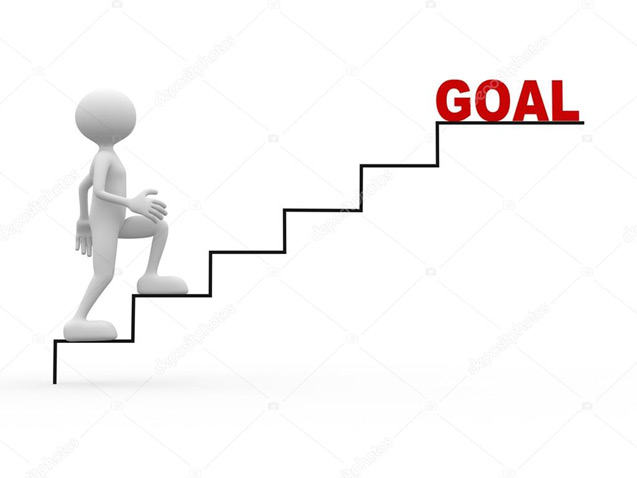
We wake up each morning and utter the ‘Agent’s Prayer’ (“Lord, let me keep all my clients and get new ones today”). For most insurance agencies, that statement comprises both our Strategic and Tactical Planning. Those of us who come from hardy European stock may have inherited the superstition that talking about goals and wishes keep them from happening and talking about potential negative occurrences hasten their appearance.
I have it on good authority that, rather than caste the defining vote, the Supreme Being has given us all the free will to accomplish (or not) everything for which we have the ability or capability and neither good things nor bad are pre-defined. However, pre-determination is certainly a convenient reason for not pursuing that for which we may be capable and a convenient excuse for all the bad things that happen to us (personally or professionally).
This article is a waste of time for fans of pre-determination who mechanically come to work every day with no goals, desires or expectations beyond maintaining the status quo and eventually selling and retiring.
However, if you understand that owning an insurance (or any other type of) business is a platform raised above most of the population of the world. That platform, whether built or inherited, raises your ability to achieve more than most of the people in the world who have not had the luck and/or drive to succeed in life.
Almost a half a century of dealing with thousands of insurance agencies has convinced me that most agents lift their platforms for a part of their careers and then stall. A small percentage incorporate the “hydraulics” of Strategic Planning in to their lives and continue to grow throughout their entire career. They still enjoy life and transition their agencies to the next generation of owners, but they do so with much more satisfaction that they have accomplished life goals on the way.
It is never too late to begin the planning process. The fact that you own more than your personal group of clients and have a support team to help you sell to and administer the clients that you have accumulated puts you ahead of 99% of the world’s population. But it doesn’t define your success. YOUR ATTITUDE TOWARDS YOUR BUSINESS AND LIFE DOES THAT.
I suggest that you take this Fall to create and initiate your own Plan that encompasses both Strategic and Tactical views of next year and of the future.
As Stephen Covey said, “Begin with the End in Mind.” All Planning begins with long term goals. Where would you like to be in five years? Retired? Larger as an agency than now? Making more money? Taking more quality time off with your family? — there are no limits to your long term goals – every one of us has different goals in life, regardless of our profession or stage in life.
Once we have those overriding personal goals we are ready to progress to the implementation stage.
Most businesses who claim to Plan, large and small, will do some variation of Annual Planning. This encompasses the TACTICS of growth and retention – what we’d like to accomplish by the end of next year.
Too many businesses create or publish their annual goals and then expect them to happen because we’ve written them down. We monitor them on a quarterly basis (at best) and then pat ourselves on the back when we accomplish our short term goals or beat ourselves up when we don’t. But besides actually verbalizing and memorializing our expectations for the year we count on repeating the same TACTICS in which we operated historically and hoping for our desired results next year.
If we are conservative, we have projected less than or as much as we have historically accomplished. If we are aggressive, we project expectations of ourselves beyond what we have achieved historically and, without changing our actions, we set ourselves up for disappointment when we only achieve results equivalent to our recent historical performance.
We have confused TACTICS with STRATEGY and have not taken the steps to ACTION PLAN and MONITOR our activities toward our annual goals.
In reality, before we ever set an Objective for next year we need to establish HOW we expect to get to our Long Term Goals that began the process.
“IF ONE DOES NOT KNOW TO WHICH PORT ONE IS SAILING, NO WIND IS FAVORABLE.” (Seneca)

Your personal Long Term Goals tells you to which port you are headed. The more defined your personal goals, the better you can determine your destination.
That Journey Destination becomes your target – YOUR PORT – and your Plan becomes your navigation tool. Your STRATEGY defines HOW you expect to achieve your goals while your TACTICS define your Interim Objectives (like your annual goals).
If your goals are such that continuing your historical results will achieve your long term expectations, they you only need to ‘steer the boat’ and avoid the shoals. But most of us have end-point goals and expectations that require more effort and a change in the way we operate to achieve.
STRATEGY DEVELOPMENT defines what you must do differently to achieve the end-point of your own personal goals.
The simplest example is the agency that has grown by a few percentage points each year (inflation) and is worth $500,000 with an owner who needs $1,000,000 to retire to his desired comfort level. Unless he is willing and able to work 20 more years, he has to grow faster and build his value to the desired level in the period of time he expects to remain active in the business. The WAY that is devised to grow faster and grow value is the agency’s initial STRATEGY.
The Tactical Plan is the Objectives of the agency for the next year that will put it on the course to achieve the growth and value goals in the Strategy to permit the owner to retire at the level desired in the time period desired. So we have Retention Goals (percentage of existing revenue expected to be maintained in the next year) and New Business Goals that comprise the total agency growth goal. While this is a very simplified example, a Plan can be comprised of many Strategies and Annual Goals that will set the agency’s course toward it’s desired “Port”.
Of course the greatest failure in agencies who DO plan is not implementing their Objectives or monitoring their results through the year to permit fine-tuning and mid-year corrections. This requires Action Planning (the ‘How To’ accomplish each Objective) and Benchmarking, the reporting and evaluating results on a monthly basis with corrective action taken quarterly if the results don’t meet the Objectives.
We encourage you to create and implement a Strategic Plan regardless of your size and whether or not you have planned in the past. Strategic Planning is the best way of influencing your future to result in your desired goals. It also distinguishes between building your future on the shoulders of your team or on the bodies of your staff along the way. Include your staff in your Strategic Planning and they, as well as you, will enjoy a more satisfying career as well as help you achieve all that you can be.

